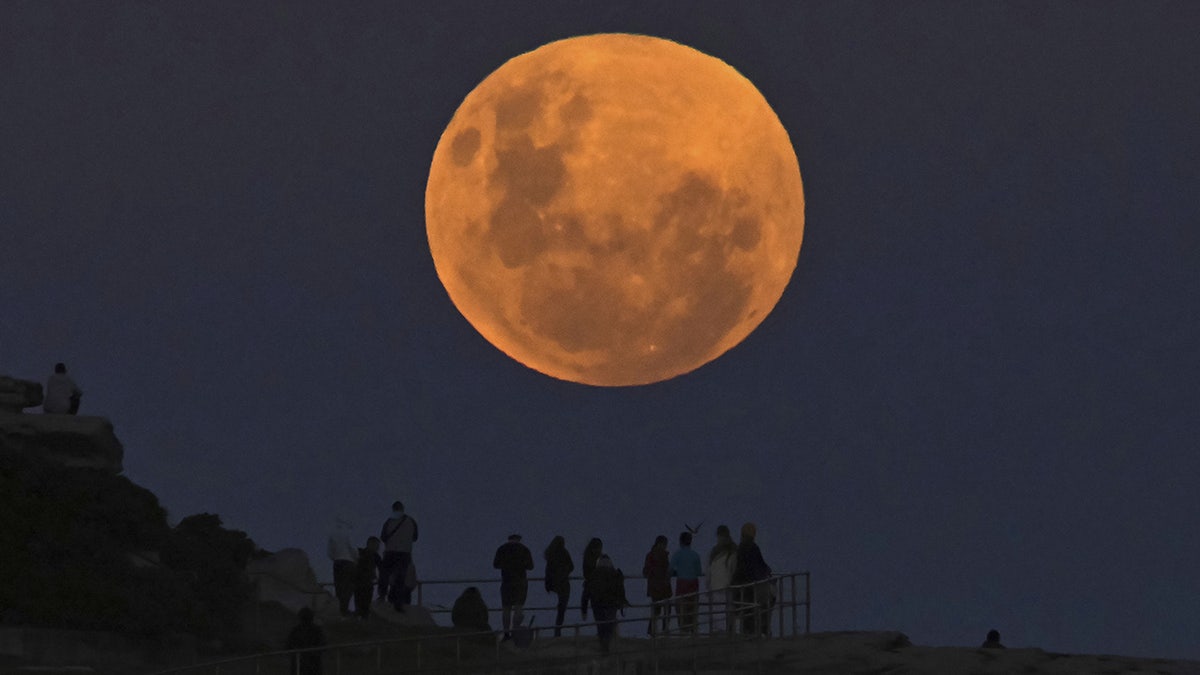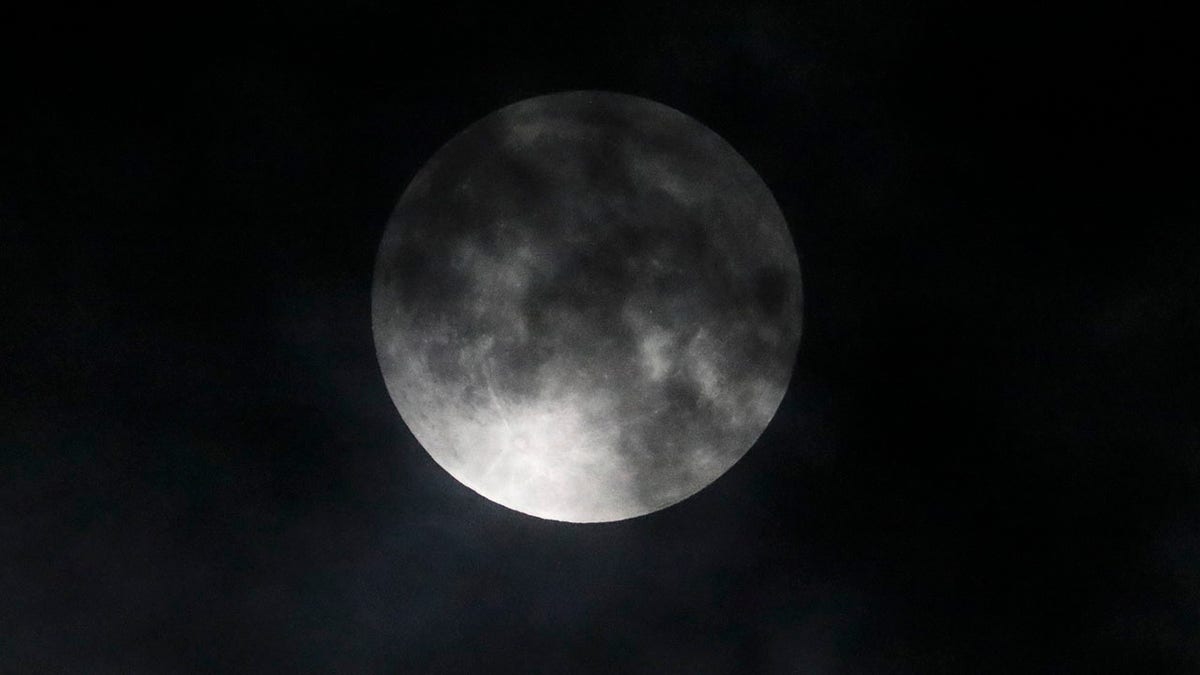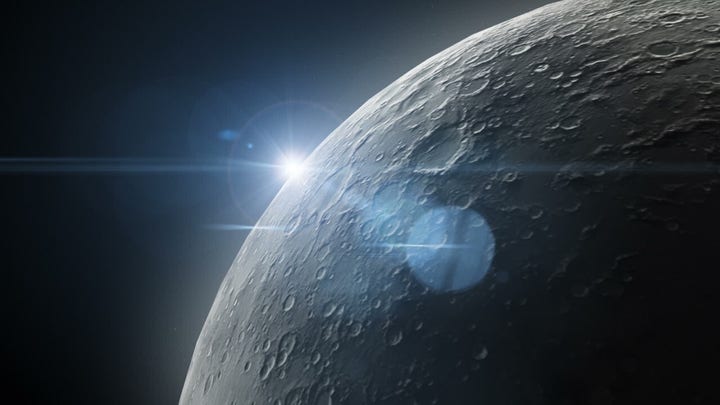NASA plans to follow up exploration of Mars with moon mission
Former NASA Administrator Jim Bridenstine weighs in on future of the space agency on 'FOX News @ Night'
A super "Blood Moon" captured the attention of viewers across the world on Wednesday.
While on Tuesday it appeared as a glittering full moon – the closest to Earth sky-gazers can witness – the next morning the moon appeared tinged with a reddish glow.
PINK SUPERMOON STUNS VIEWERS ACROSS THE WORLD
According to NASA, the Blood Moon occurs during a total lunar eclipse when the Earth aligns itself between the moon and the sun.
"When this happens, the only light that reaches the moon's surface is from the edges of the Earth's atmosphere. The air molecules from Earth's atmosphere scatter out most of the blue light. The remaining light reflects onto the moon's surface with a red glow, making the moon appear red in the night sky," the agency explained on its website.
Notably, this Blood Moon is a combination of May's full Flower Moon – which is classified as a supermoon – and a total lunar eclipse.

SYDNEY, AUSTRALIA - MAY 26: People watch the "Super Flower Blood Moon" rises over the Pacific Ocean at Bondi Beach in Sydney, Australia on May 26, 2021. The "Super" moon observed in May is often defined as "flower moon" as well, mainly due to association with flowers blooming at this time of year. During the eclipse, the moon turns into a deep blood-red color, known as "blood moon." This celestial incident -- known as "Super Flower Blood Moon" -- is the only full lunar eclipse of this year. (Photo by Steven Saphore/Anadolu Agency via Getty Images)
A supermoon, also known as a perigean full moon, occurs when the side of the moon facing Earth is fully illuminated by the sun and is at the closest point in its orbit around Earth.
While the super Blood Moon and its total eclipse phase is distinctly visible over eastern Asia, the Pacific Ocean and parts of the western U.S., most of the East Coast and central U.S. gets the short end of the stick as the moon is below the horizon at the time of the full eclipse.

The lunar eclipse progress is seen behind the clouds over Santa Monica Beach in Santa Monica, Calif., Wednesday, May 26, 2021. The first total lunar eclipse in more than two years is coinciding with a supermoon for quite a cosmic show. (AP Photo/Ringo H.W. Chiu)
In a Monday blog post, NASA's Gordon Johnston said that explained that while East Coast viewers would only witness the "barely-detectable start of the eclipse as the moon sets," Americans lucky enough to have both clear skies and a clear view of the horizon would be able to really understand their place in the alignment.
"You can see the sunrise, then turn 180 degrees to see the curved shadow of the round Earth starting to fall across the edge of the moon as the moon sets," he instructed.
The supermoon would pass through the full shadow of the Earth – also known as the umbra – at approximately 5:45 a.m. ET.
NASA REVEALS ARTEMIS PROGRAM WILL LAND 1ST PERSON OF COLOR ON THE MOON
The totality of the Blood Moon lunar eclipse would last for around 14 minutes and 30 seconds and the moon.
Following the eclipse, the event repeats in reverse as the moon moves out of Earth's shadow.
According to Johnston, the next full moon would appear opposite the sun in Earth-based longitude at 7:14 a.m. ET.
The moon is expected to appear full through Thursday morning.
Forbes explained that the name Flower Moon indicates that just nine hours before becoming fully illuminated, the moon will reach its closest point to the Earth – or perigee – for the year.
CLICK HERE FOR THE FOX NEWS APP
The Flower Moon is named after the abundance of flowers that emerges in late spring.
The next supermoon – the super "Strawberry Moon" will be visible on the East Coast on June 24 and there are three more eclipses scheduled to take place before 2022.
However, the next total lunar eclipse won’t happen over North America until May 2022.


